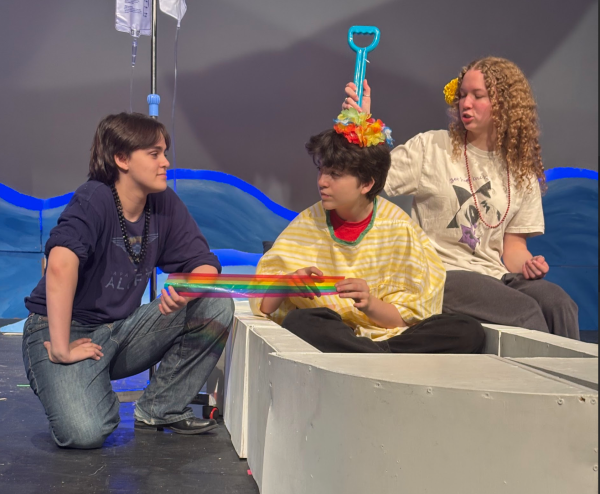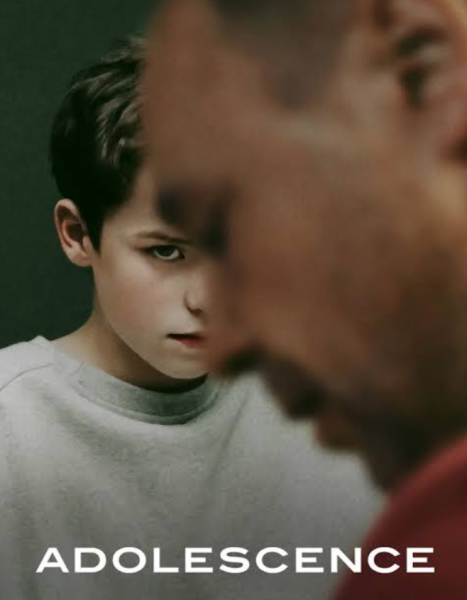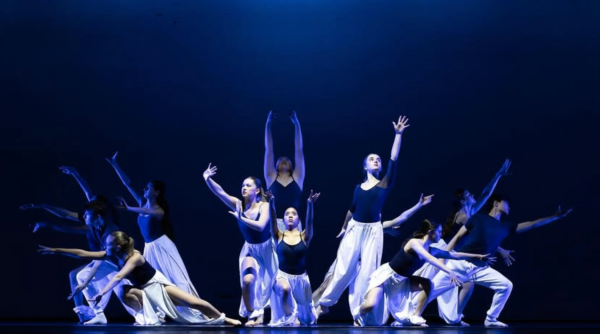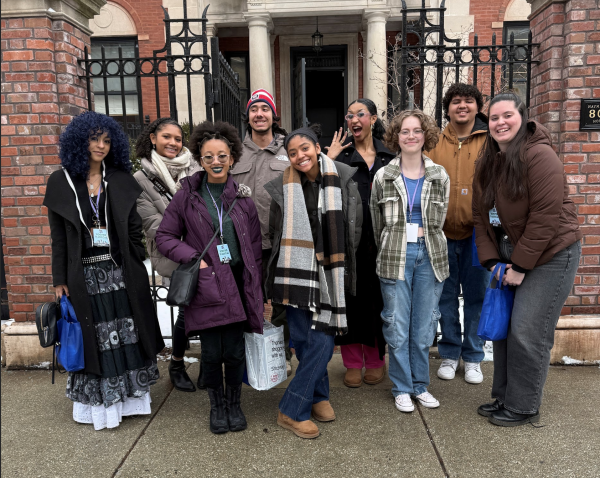Review: Nothing is as it seems in “Ratched”
⭐️⭐️⭐️⭐️⭐️
On Sept. 18, Netflix released renowned horror producer Ryan Murphy’s new show, “Ratched.” The show follows and unpacks the origin story of Mildred Ratched, who is originally from the literary classic and subsequent movie, “One Flew Over the Cuckoo’s Nest.” Netflix announced in four weeks, “Ratched” was their biggest original release of 2020 with over 48 million members streaming.
Contrary to its high quantitative reception, NPR, Rolling Stone, and many reviews had harsh critiques for the show’s high number of storylines to unpack. However, the complex storylines and detailed-oriented production are the parts of the show I enjoyed the most. I would recommend “Ratched” to anyone looking for a new show who can stomach a couple murders and lobotomies.
“Ratched” predates “One Flew Over the Cuckoo’s Nest,” by 19 years. The show opens with a violent murder scene of four priests at their clergy house. The murderer, Edmund Tolleson (Finn Wittrock), reveals to one of the priests, as he kills him, that he is his son. Jump to six months later, Tolleson is being moved to Lucia State Hospital (a mental institution) for 120 days of treatment.
The lead role, Mildred Ratched, played by Sarah Paulson, is the most memorable part of the show. Ratched joins the team as a nurse at Lucia and learns about some radical mental health treatments, while also trying to change the system as a whole. She spends the show manipulating, or even hurting, every person she comes into contact with for her own agenda (to save Tolleson from the death penalty).
The show truly encapsulates the idea that nothing is as it seems. Every episode brings a new twist. Rather than introducing new characters or plotlines, “Ratched” takes characters you have become comfortable with and reveals unsettling truths about their past, motivations, and connections to others.
Ratched is introduced as manipulative, evil, someone you need to keep an eye on. But unlike the other character, Ratched’s problems begin when she is forced to be vulnerable and start telling her truths. Her character revealed a harsh reality for me: sometimes it is easier to work, to think, to lie all the time than to address your actual problems head on. She is so distracted with her external conflict that she never has time to grapple with her own internal conflict.
Ratched is most uncomfortable, and so was I as a viewer, when she is facing her own truths.
Her associate, Gwendolynn Briggs (Cynthia Nixon), says to her, “I wish I could have met Mildred Ratched before the world got to her. Before somebody convinced her that the only way to survive is to build a wall around her, and never let anybody in.”
Ratched could have chosen to keep lying and refused to let anyone uncover her true intentions in Lucia. But her secrets eat her up inside. She breaks. Her motives are swayed, and she is snapped out of this reality: she learns that she does not have to sacrifice her life to save others, but she has her own life worth living. Even if you do not understand her methods, you will understand her motives.
Every character in the show undergoes a complete transformation in just eight episodes. Ratched goes from being the villain to someone you empathize with and worry about. Her once professional boss is revealed as a money-hungry narcissist. There are too many layers to even begin to analyze here, and while some critique it as overwhelming, the show had the most human portrayal I have ever seen.
Ryan Murphy, who produced “American Horror Story,” “Glee,” “Pose,” and countless other movies and films, is notorious for these holistic portrayals, even in the most obscure and unexpected context. He made sure no detail was missed in this show, and everything is intentional. The set, costumes, and music are always on cue. The whole show is oversaturated and colorful, making it simply a visual delight to watch.
The flaws many critiqued in “Ratched” are the parts I enjoyed most, and I have watched it several times through since its release. The show was signed for two seasons. It can be viewed on Netflix at any time. Disclaimer: there are some graphic depictions of domestic sexual abuse in Epsiode Six.
Even when Ratched is portrayed as the villain of the show, I saw myself in her. There is something so freeing about seeing yourself in a perpetually flawed character. It made me comfortable with my own flaws. Not that I should try to bury my own flaws and live despite them, or even that I should use them for ethically questionable behavior, but that I am just a person, flaws and all. I can’t pick and choose which parts of me to share with the world. I have to go out everyday with all the best and worst parts of me.





